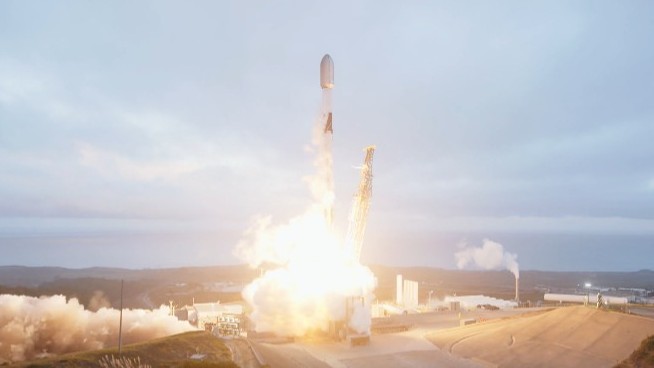SpaceX launches Starlink satellites on 125th Falcon 9 mission of the year (video)
SpaceX has now launched its workhorse Falcon 9 rocket 125 times this year.
A Falcon 9 lifted off from Vandenberg Space Force Base on California's central coast today (Oct. 3), rising into the sky at 10:06 a.m. EDT (1406 GMT; 7:06 a.m. local California time).
The rocket is carrying 28 of SpaceX's Starlink satellites, which its upper stage deployed into low Earth orbit (LEO) about an hour after launch, according to a SpaceX social media post.

The Falcon 9's first stage, meanwhile, came back to Earth a little over eight minutes after liftoff today, touching down in the Pacific Ocean on the SpaceX droneship "Of Course I Still Love You."
It was the second launch and landing for this particular booster, which is designed B1097. Its other flight was also a Starlink mission, SpaceX wrote in a mission description.
More than 70% of the Falcon 9 launches in 2025 have been dedicated to building out Starlink, the largest satellite constellation ever assembled.
More than 8,500 active Starlink spacecraft circle Earth at the moment. There are just currently just 12,500 or so operational satellites of any kind in orbit, according to the European Space Agency — meaning that two out of every three functional spacecraft right now is a Starlink satellite. And that proportion is only going to climb as more and more Starlinks go up.
Breaking space news, the latest updates on rocket launches, skywatching events and more!

Michael Wall is a Senior Space Writer with Space.com and joined the team in 2010. He primarily covers exoplanets, spaceflight and military space, but has been known to dabble in the space art beat. His book about the search for alien life, "Out There," was published on Nov. 13, 2018. Before becoming a science writer, Michael worked as a herpetologist and wildlife biologist. He has a Ph.D. in evolutionary biology from the University of Sydney, Australia, a bachelor's degree from the University of Arizona, and a graduate certificate in science writing from the University of California, Santa Cruz. To find out what his latest project is, you can follow Michael on Twitter.
You must confirm your public display name before commenting
Please logout and then login again, you will then be prompted to enter your display name.
